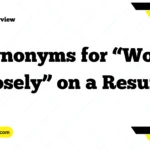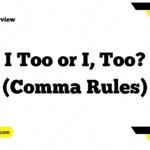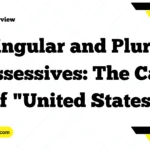When it comes to polite refusals, the distinction between “No thank you” and “No, thank you?” might seem minor, yet it carries significant weight in terms of grammatical correctness and politeness.
This guide will delve into the rules and nuances of using these phrases correctly in various contexts, ensuring that your manners are as impeccable as your grammar.
The Importance of the Comma in “No, Thank You”
Rule 1: Direct Refusal
Correct Usage:
- “Would you like some more coffee?” “No, thank you.”
- “Do you need assistance?” “No, thank you.”
Incorrect Usage:
- “Would you like some more coffee?” “No thank you.”
- “Do you need assistance?” “No thank you.”
Explanation: The comma in “No, thank you” separates the refusal (“No”) from the polite addition (“thank you”), making the phrase more courteous and clear.
Rule 2: Starting a Sentence

Correct Usage:
- “No, thank you, I’ve had enough to eat.”
- “No, thank you, I don’t need a ride.”
Incorrect Usage:
- “No thank you, I’ve had enough to eat.”
- “No thank you, I don’t need a ride.”
Explanation: When beginning a sentence with a refusal, using “No, thank you,” provides a clear and polite demarcation of your decline.
Rule 3: In Written Communication
Correct Usage:
- In an email: “I appreciate the offer, but no, thank you.”
- In a note: “Regarding your invitation, no, thank you.”
Incorrect Usage:
- In an email: “I appreciate the offer, but no thank you.”
- In a note: “Regarding your invitation, no thank you.”
Explanation: Even in written form, the comma helps convey a polite and measured tone, making your refusal clear and respectful.
Rule 4: When Pausing for Emphasis

Correct Usage:
- “No, thank you; I really couldn’t eat another bite.”
- “No, thank you; that’s very kind, but I must decline.”
Incorrect Usage:
- “No thank you; I really couldn’t eat another bite.”
- “No thank you; that’s very kind, but I must decline.”
Explanation: The comma after “No” allows for a natural pause, emphasizing the gratitude expressed in the “thank you” that follows.
Rule 5: Declining Offers Politely
Correct Usage:
- “Would you like to join us?” “No, thank you, I have other plans.”
- “Can I get you something to drink?” “No, thank you, I’m good.”
Incorrect Usage:
- “Would you like to join us?” “No thank you, I have other plans.”
- “Can I get you something to drink?” “No thank you, I’m good.”
Explanation: The comma makes the decline smoother and softer, helping to maintain a friendly tone.
Rule 6: In Formal Writing
Correct Usage:
- In a formal letter: “Thank you for your invitation, but no, thank you.”
- In a professional email: “After consideration, I’ve decided no, thank you.”
Incorrect Usage:
- In a formal letter: “Thank you for your invitation, but no thank you.”
- In a professional email: “After consideration, I’ve decided no thank you.”
Explanation: Especially in formal contexts, the correct punctuation is crucial for conveying respect and politeness.
Rule 7: With Additional Clauses
Correct Usage:
- “No, thank you, for your kind offer, but I must decline.”
- “No, thank you, I couldn’t possibly accept.”
Incorrect Usage:
- “No thank you for your kind offer, but I must decline.”
- “No thank you I couldn’t possibly accept.”
Explanation: When adding more information or reasoning, the comma keeps the initial polite refusal distinct and clear.
Rule 8: In Expressions of Gratitude
Correct Usage:
- “I’m grateful for the gesture, but no, thank you.”
- “Your consideration means a lot, but no, thank you.”
Incorrect Usage:
- “I’m grateful for the gesture, but no thank you.”
- “Your consideration means a lot, but no thank you.”
Explanation: Even when expressing gratitude, the comma delineates the refusal from the appreciation, balancing politeness with declination.
Rule 9: When Refusal is Implied
Correct Usage:
- “No, thank you, I shouldn’t indulge.”
- “No, thank you, I’m trying to cut back.”
Incorrect Usage:
- “No thank you, I shouldn’t indulge.”
- “No thank you, I’m trying to cut back.”
Explanation: The polite formula of “No, thank you” is versatile, fitting various contexts where a direct “No” might be too abrupt.
Rule 10: Emphasizing the Refusal
Correct Usage:
- “Absolutely not, thank you.”
- “Certainly not, thank you.”
Incorrect Usage:
- “Absolutely not thank you.”
- “Certainly not thank you.”
Explanation: Even when strengthening the refusal, the comma maintains the polite tone, separating the firm “No” from the cordial “thank you.”

Nicholas Clark is currently an English instructor at a university. She has experience in teaching and assessing English tests including TOEFL, IELTS, BULATS, FCE, CAE, and PTEG. With over a decade of teaching expertise, Nicholas Clark utilizes his knowledge to develop English lessons for her audience on English Overview.



















